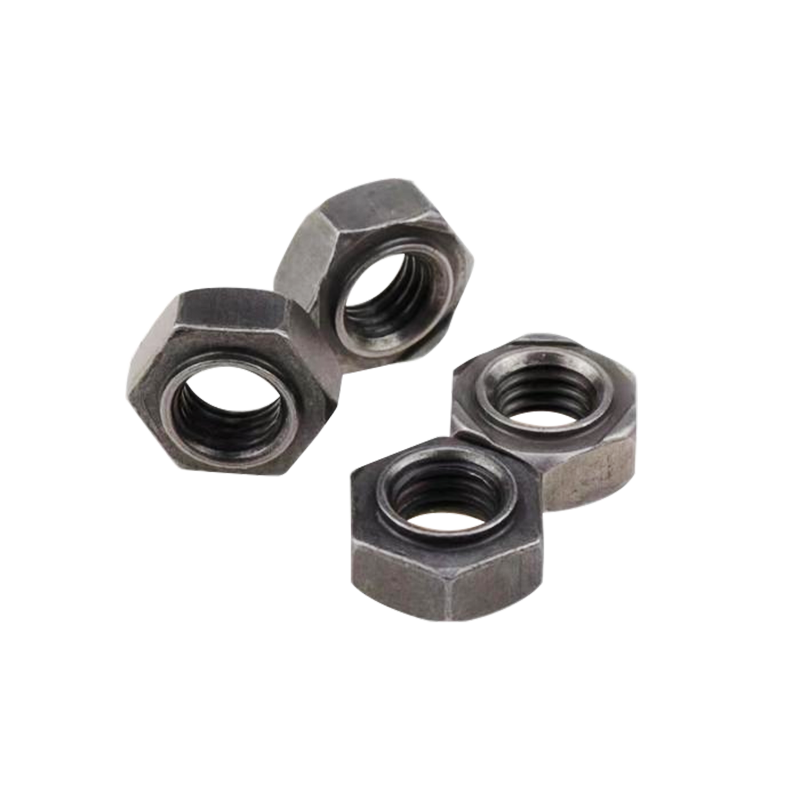Can hexagon weld nuts be welded onto thin metal surfaces?
Hexagon weld nuts are versatile fasteners designed for secure threaded connections in metalworking applications where welding is preferred. One common question that arises regarding these nuts is whether they can be effectively welded onto thin metal surfaces.
Understanding Hexagon Weld Nuts
Hexagon weld nuts, as their name suggests, feature a hexagonal shape with six flat sides, which allows for easy gripping and turning using wrenches or socket tools. Their distinctive feature lies in their welded design: they have a flat base with small projections or wings around the perimeter. These wings provide additional surface area for welding, enabling the nut to be securely attached to metal components through a welding process.
Welding Onto Thin Metal Surfaces
Considerations for Welding:
Heat Sensitivity: Thin metal surfaces are particularly sensitive to heat during welding. Excessive heat can lead to warping, distortion, or even burn-through of the metal. Therefore, it's crucial to use welding techniques that minimize heat input and control the welding parameters carefully.
Welding Techniques: Techniques such as TIG (Tungsten Inert Gas) welding, spot welding, or even stud welding can be suitable for welding hexagon weld nuts onto thin metal surfaces. These techniques provide better control over heat application compared to processes like MIG (Metal Inert Gas) welding, which generates more heat and can be more challenging to control on thin materials.
Preparation: Proper preparation of the welding area is essential. The surface should be cleaned thoroughly to remove any contaminants that could affect the quality of the weld. Additionally, ensuring proper fit-up of the nut and the metal surface will aid in achieving a strong weld.

Welding Parameters: Adjusting welding parameters such as current, voltage, and welding speed is critical when welding onto thin metal. Lower current settings and faster welding speeds help to minimize heat buildup and reduce the risk of damaging the base material.
Positioning and Fixturing: Consider the positioning of the Hexagon weld nuts on the thin metal surface. Welding from the opposite side of the nut or using fixtures to support the thin metal can help distribute heat evenly and prevent distortion.
Practical Application:
In practical terms, hexagon weld nuts can indeed be welded onto thin metal surfaces when proper welding techniques and precautions are employed. The key lies in careful heat management and choosing the appropriate welding method that suits the thickness and material of the base metal.
Expert Advice:
For applications where welding onto thin metal surfaces is unfamiliar or challenging, consulting with a welding specialist or engineer is highly recommended. They can provide specific recommendations tailored to the material thickness, welding equipment, and environmental conditions, ensuring a successful and durable attachment of hexagon weld nuts.
Related products
-

Hexagonal Nylon Head Series
-

Pan Head Cross Series Drill Tail Screws
-

Round Head Huasi Cross Series Drill Tail Screws
-

Pan Head Cross Series
-

Countersunk Cross Self-Tapping Screw
-

Double Countersunk Rice Fiber Board Nail
-

Cross Flat Head Dry Wall Nail
-

10.9 Grade Flange Outer Hexagonal Fine Thread Bolt
-

304 Stainless Steel Teeth
-

Hexagonal Galvanized Nut
-

Pan Head Self-Tapping Screw
-

Hexagonal Drill Tail Screw

 English
English  English
English 中文简体
中文简体 русский
русский


